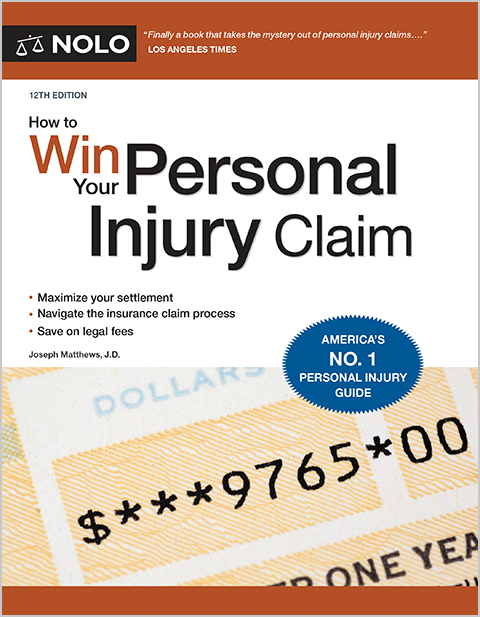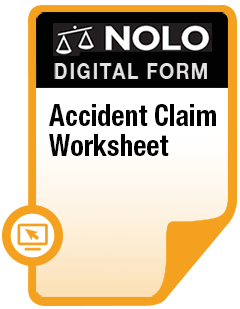Learn how New York handles dangerous dogs and when owners can face civil or criminal liability.
New York state law covers both a dog owner's responsibilities and a dog-attack victim's options for seeking compensation. If a court decides that a dog is dangerous, its owner can be fined and ordered to take steps to protect the public from their pet. In addition, a victim may be able to sue the owner for money to cover the consequences of the attack. Whether you've been injured by a dog in New York, or own a dog that may have hurt someone, it's important to understand how state law applies to you.
New York's Definition of a "Dangerous Dog"
New York defines a dangerous dog as a canine that:
- seriously injures or kills a person, pet, or farm animal in an unjustified attack
- behaves in a way that would make a reasonable person think the dog "poses a serious and unjustified imminent threat of serious physical injury or death" to a person, pet, or farm animal, or
- injures or kills a service dog, guide dog, or hearing dog in an unjustified attack.
(NY Agric. & Mkts. Law § 108(24) (2025).)
A dog can be found "dangerous" either through a special hearing process or in a civil lawsuit brought by the victim of an attack.
Special Hearings on Dangerousness
New York's Consolidated Laws (the state's name for its civil code) include a section titled "Dangerous Dogs" that lays out the rules for identifying and controlling dogs that pose a threat to people and other animals. In this context, a "dangerous dog" is one that a judge has found to be dangerous after evaluating evidence presented at a hearing.
(NY Agric. & Mkts. Law § 123 (2025).)
Filing a Complaint
Anyone who sees a dog attack a person, pet, or farm animal can report the incident to their local animal control officer or the police. If a child witnesses the attack, an adult can make the report on the child's behalf.
If the officer agrees that the dog is probably dangerous, they must file the complaint. But if the officer does not file a complaint, then the witness can do it themselves. The complaint asks a judge to hold a hearing to decide if the dog is dangerous and to issue any orders necessary to protect the public.
(NY Agric. & Mkts. Law §§ 123(1), 123(2) (2025).)
The Dangerousness Hearing
At the hearing, the burden is on the person bringing the complaint to prove with "clear and convincing evidence" that the dog is dangerous.
A judge who thinks there's a good chance the dog might be dangerous can have the animal impounded temporarily until final decisions after the hearing.
Keep in mind that there are times when a judge won't deem a dog dangerous even if it has seriously injured or killed a person or animal. New York law provides a full list of situations that excuse a dog's behavior. Generally speaking, though, a dog won't be deemed dangerous if it was:
- protecting its owner or its owner's household from a crime or other offense, or
- protecting itself or its offspring from abuse or a threat.
One of the purposes of a hearing is to decide if a dog's behavior was unacceptably dangerous, or justified under the circumstances.
(NY Agric. & Mkts. Law §§ 123(2), 123(4) (2025).)
Consequences for a Dangerous Dog
If a judge decides after a hearing that a dog is dangerous, the government can impose rules designed to protect the public.
A dangerous dog must be neutered or spayed and microchipped.
The judge can also order the dog to be:
- given training paid for by the owner
- humanely confined to prevent it from escaping and threatening the public
- allowed in public only when on a leash held by someone 21 years or older, or
- humanely muzzled when in public.
In the worst cases—where a dog has killed or badly injured a person, or has a history of serious attacks on people or animals—the judge can order that a dog be euthanized.
(NY Agric. & Mkts. Law §§ 123(2), 123(3) (2025).)
Consequences for Owners of Dangerous Dogs
A judge who decides that a dog is dangerous can impose requirements and penalties on the owner.
The owner must pay the medical expenses of people and animals injured by their dangerous dog. (We'll talk below about a victim's other options for recovering their medical expenses.) A judge can also order an owner to carry up to $100,000 in liability insurance to cover any future harm caused by the dangerous dog.
(NY Agric. & Mkts. Law §§ 123(2)(e), 123(10) (2025).)
In addition, once a dog has been deemed "dangerous," its owner could face criminal charges for future incidents:
- If the owner's negligence allows a "dangerous" dog to bite someone, the owner could face a fine of up to $3,000 and up to 90 days in jail.
- If an owner's "dangerous" dog kills someone, the owner is strictly liable. They could face up to one year in jail, and it doesn't even matter if they took precautions to protect the public from the dog.
(NY Agric. & Mkts. Law §§ 123(8), 123(9) (2025).)
These criminal penalties for a second attack don't apply in all circumstances. Even a dangerous dog is sometimes allowed to bite or kill an attacker to stop a serious crime like murder or kidnapping.
(NY Agric. & Mkts. Law § 123(11) (2025).)
Consequences for Negligent Dog Owners
Dog owners can be fined by the government if their negligence leads to an attack. (As we'll discuss below, a dog-attack victim may also be able to sue a negligent owner for negligence.)
An owner can be fined $400 for negligently allowing their dog to bite and injure a person, a pet, a service animal, or a farm animal.
The fine goes up to $1,500 if the owner's negligence results in their dog biting and seriously injuring someone. Fines can be reduced by any amount the owner pays directly to the victim to cover medical expenses, lost earnings, and other damages. So, for example, if an owner is fined $1,000, and the victim has $600 in damages, the owner could choose to cover those damages and pay the remaining $400 to the government.
(NY Agric. & Mkts. Law §§ 123(6), 123(7) (2025).)
Appealing a Determination of Dangerousness
An owner who disagrees with a court's decision that a dog is dangerous has 30 days to file an appeal asking a higher court to overturn or modify the original ruling. If the owner appeals a euthanasia order, the order is put on hold until a final decision is reached.
(NY Agric. & Mkts. Law § 123(5) (2025).)
Suing Owners for Injuries Caused by Their Dogs
The hearing process for potentially dangerous dogs is focused on public safety. That's why it's sometimes a local government, and not someone who was injured by the dog, arguing that the dog should be deemed "dangerous."
But someone who's been harmed by a dog has the option of filing a personal injury lawsuit against the dog's owner, or anyone else who was legally responsible for the dog's behavior. In a civil suit, the plaintiff is asking for money as compensation for their damages.
A dog attack victim in New York might be able to sue:
- under a strict liability theory if the owner knew their dog might be dangerous, or
- a negligence theory if the owner's carelessness led to the victim's injuries.
Strict Liability and "One-Bite Rule" Liability in New York
Like many states, New York uses a version of the so-called "one-bite rule" to decide when a dog owner is strictly liable. An owners is strictly liable for all of a victim's damages if they knew about their animal's vicious propensity, and the damage or injury was caused by that vicious propensity.
On the other hand, an owner who did not know their pet might be dangerous can only be strictly liable for a victim's medical costs. In a case like this, a victim must show the owner was negligent if they want to recover damages for things like lost wages or their pain and suffering.
Keep in mind that, even under strict liability, an owner is only liable for unjustified attacks. As we discussed earlier, the law can excuse a dog's behavior if it's been provoked or is acting to defend itself, its owner, or others.
(Flanders v. Goodfellow (2025 NY Slip Op 02261); NY Agric. & Mkts. Law § 123(10) (2025).)
Suing a New York Dog Owner for Negligence
Until recently, New York state had an unusual rule that prohibited negligence lawsuits against dog owners. Instead, victims could only sue under a strict liability theory. This meant victims could only recover damages from an owner if they could prove that the owner knew in advance that their dog might be dangerous. So, there were cases where:
- a victim's injuries were clearly caused by an owner's irresponsible failure to control their dog, but
- courts were forced to dismiss the victim's lawsuit anyway.
- an owner was careless in how they handled or controlled their dog, and
- this carelessness allowed the dog to injure the victim.
Suing People Other Than the Dog's Owner
Sometimes people other than a dog's owner can be held legally responsible if the animal injures someone. As we discussed above, dog owners can't be sued for negligence. On the other hand, non-owners can be liable for negligence if their carelessness allows a dog to injure someone.
In most situations, a victim can only win a negligence case against a non-owner if they can prove the defendant knew—or should have known—that the dog had a vicious propensity. For example, landlords aren't automatically responsible for the behavior of their tenants' pets. But a landlord could be sued for negligence if they know a tenant has a dangerous dog, and don't do anything to address the situation or notify other tenants.
There are certain scenarios in which a non-owner could be held liable for negligence even if they didn't know that the dog might be dangerous. For example, in 2020, New York's highest court considered a case where a woman was jumped on by a dog in the waiting room of a veterinary clinic. The court found that the clinic could be liable for negligence, for two reasons.
First, the clinic owed its customers a duty of care. This included taking reasonable precautions to keep them safe from animals being treated at the facility.
Second, the clinic's staff had significant knowledge of how animals behave, and how they react to stress and discomfort. This expertise meant that the clinic could be held liable even though no one knew that the dog involved in the case might be dangerous.
(Hewitt v. Palmer Veterinary Clinic, PC, 134 N.Y.S.3d 312 (2020).)
New York's Statute of Limitations for Dog-Bite Lawsuits
In New York, the statute of limitations for personal injury lawsuits is three years. That means the victim of a dog attack has three years from the date of the incident to file a lawsuit against the owner or anyone else who might be legally responsible. Of course, someone who thinks they may be entitled to compensation for injuries or property damage is better off pursuing their legal options well before the statute of limitations approaches.
(NY C.P.L.R. Law § 214 (2025).)
Getting Help With Your Dog-Bite Case
As we've seen, New York state's dog laws can sometimes get complicated. And, in addition to these statewide laws, municipalities have a lot of latitude to make and enforce their own animal control and licensing rules. If you have questions about how these laws apply to your situation, you might find it helpful to work with a local attorney with experience handling these kinds of cases. As you get started, make sure you know what to ask so you can find the right lawyer for your case.


